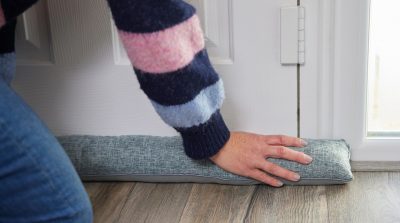Why limescale spoils the spa feeling
If you have ever noticed the morning light catch on chalky droplets across your shower screen, you have seen limescale at work. Hard water leaves behind calcium and magnesium deposits on taps, tiles and glass. Left alone, they dull chrome, etch glass and make soap scum cling more stubbornly. Even textiles feel the difference. Towels can turn scratchy when rinsed in hard water and bathroom mats pick up residue from wet shoes and drips. Keep the scale at bay and your bathroom looks brighter, smells fresher and your textiles stay plush and inviting.
Quick start: practical removal on the big offenders
Taps and mixers
Soak a soft cloth in a warm 1:1 solution of white vinegar or citric acid and water. Lay it over the tap body and around the base where water pools. Give it 10 to 15 minutes, then buff with a non-scratch sponge. Use a soft brush around aerators and rinse thoroughly. Dry with a microfibre cloth for a streak-free shine. Avoid using acids on natural stone, unsealed concrete or enamel as they may cause damage. If you are unsure, test on a tiny, hidden patch first.
Shower screens and tiles
Spritz a non-abrasive, limescale-targeting cleaner or the same mild acid solution across the glass and ceramic tiles. Work in sections, leave a short dwell time and loosen deposits with a soft squeegee or microfibre pad. For grout, use an old toothbrush with light pressure. Rinse well until the glass squeaks and dry immediately to prevent new spots. Never use acidic cleaners on marble, limestone or travertine. Choose a pH-neutral, stone-safe product for those surfaces.
Shower heads
Unscrew the head if possible and soak it in warm diluted citric solution for 20 to 30 minutes. Use a soft brush to clear nozzles, rinse and reattach. If it is fixed, fill a small bag with solution, secure it around the head and let it sit. Finish by running hot water to flush any residue.
You can find a clear, step-by-step guide on how to remove limescale that complements the routine above.
Keep textiles safe while you clean
Before you start descaling, move bath mats and towels out of splash range. If space is tight, drape an old towel over the edge of the bath or around the base of taps to catch drips. Cleaners that tackle mineral deposits can be harsh on fibres and dyes, so rinse surfaces thoroughly and dry them before rehanging fresh towels. Open a window or run the extractor fan to reduce moisture. A dedicated microfibre cloth is worth its keep here. It grabs mineral residue without scratching and leaves chrome bright enough to reflect your bathrobe’s weave.
Prevention that sticks without extra effort
Make a 30-second after-shower reset
Keep a squeegee and microfibre cloth within arm’s reach. After the last person showers, squeegee the glass and tiles from top to bottom, then quickly towel-dry the tap and screen edges where droplets collect. This tiny habit delays the return of spots and keeps that just-clean look between deep cleans.
Match your routine to water hardness
If your kettle crusts quickly or your black tap shows white dots by day two, you likely have very hard water. Do a quick descale of taps and glass once a week in very hard areas, every two weeks in moderately hard areas and monthly if your water is soft. Mark it on the family calendar and pair it with washing bath mats, which helps the whole room reset at once.
Ventilation and drying matter
Run the fan during and for 20 minutes after bathing, and leave the door slightly ajar. Hang towels fully open on a warm rail so loops dry quickly. Folded or bunched fabrics trap moisture that encourages mineral spotting and musty odours. Rotate two mats so one can air out completely between uses.
Laundry tweaks for cloud-soft towels in hard water
Use the right detergent dose for your water hardness. Under-dosing leaves minerals and soil behind, which roughens fibres. Consider a water softening additive if limescale is heavy. Skip fabric softener on towels because it can coat loops and reduce absorbency. Every few weeks, run a maintenance wash of towels with a cup of white vinegar in the rinse drawer to dissolve mineral residue and odours. Descale the washing machine quarterly following the manufacturer’s guidance. Give towels a good shake before drying to lift the pile, then tumble on low to medium heat or line dry until almost done and finish with a short, gentle tumble for loft. Store towels and bath mats fully dry.
When to call in expertise
Severe, crusted scale around fixtures, etched glass that feels rough to the touch or natural stone surfaces that demand pH-neutral care can justify professional help. A specialist can safely restore shine without risking finishes or grout. If your fixtures carry a warranty, check the care instructions for approved products and tools. For day-to-day upkeep, a steady routine, gentle tools and mindful laundering keep your bathroom feeling like a boutique hotel and your textiles soft enough to turn every shower into a small luxury.










